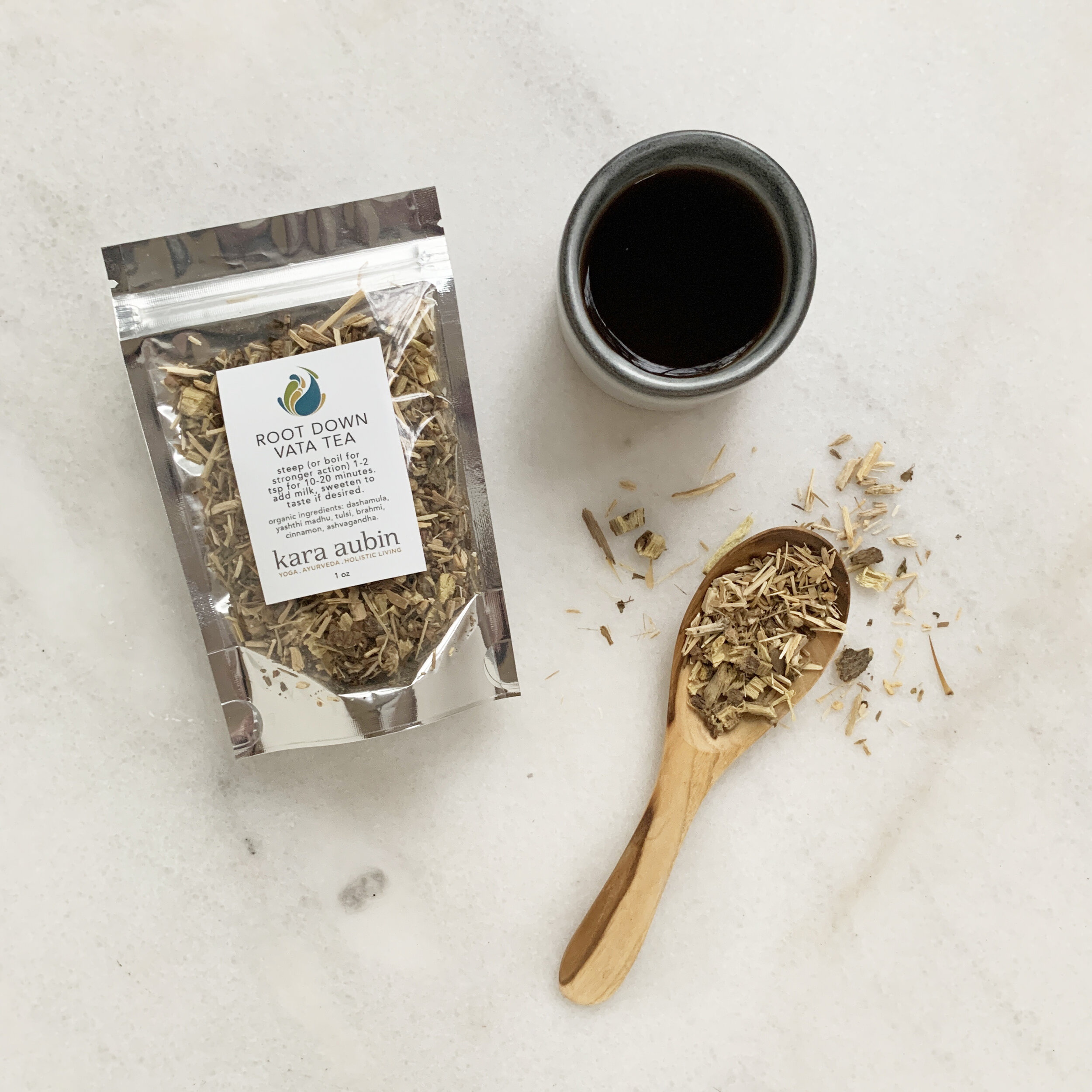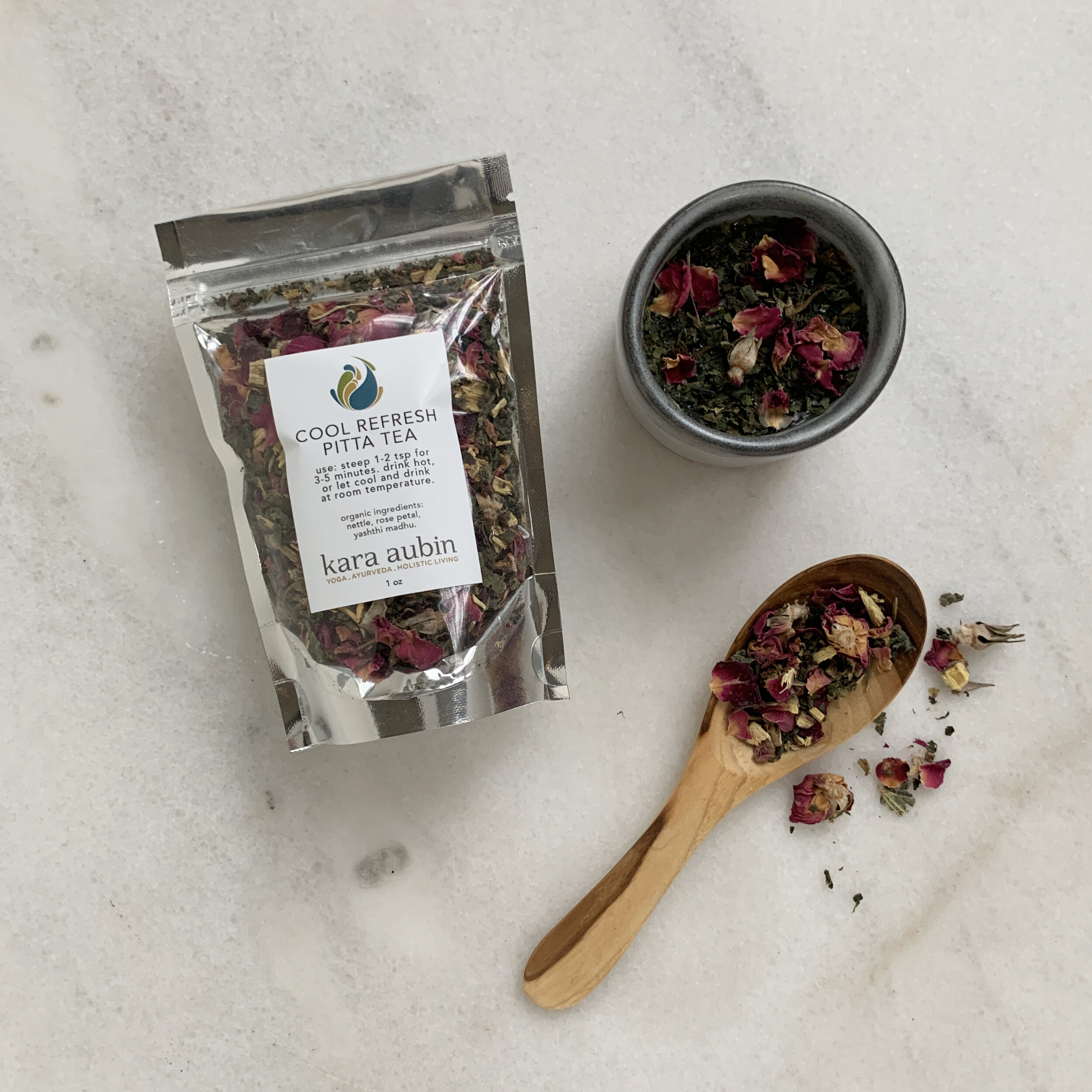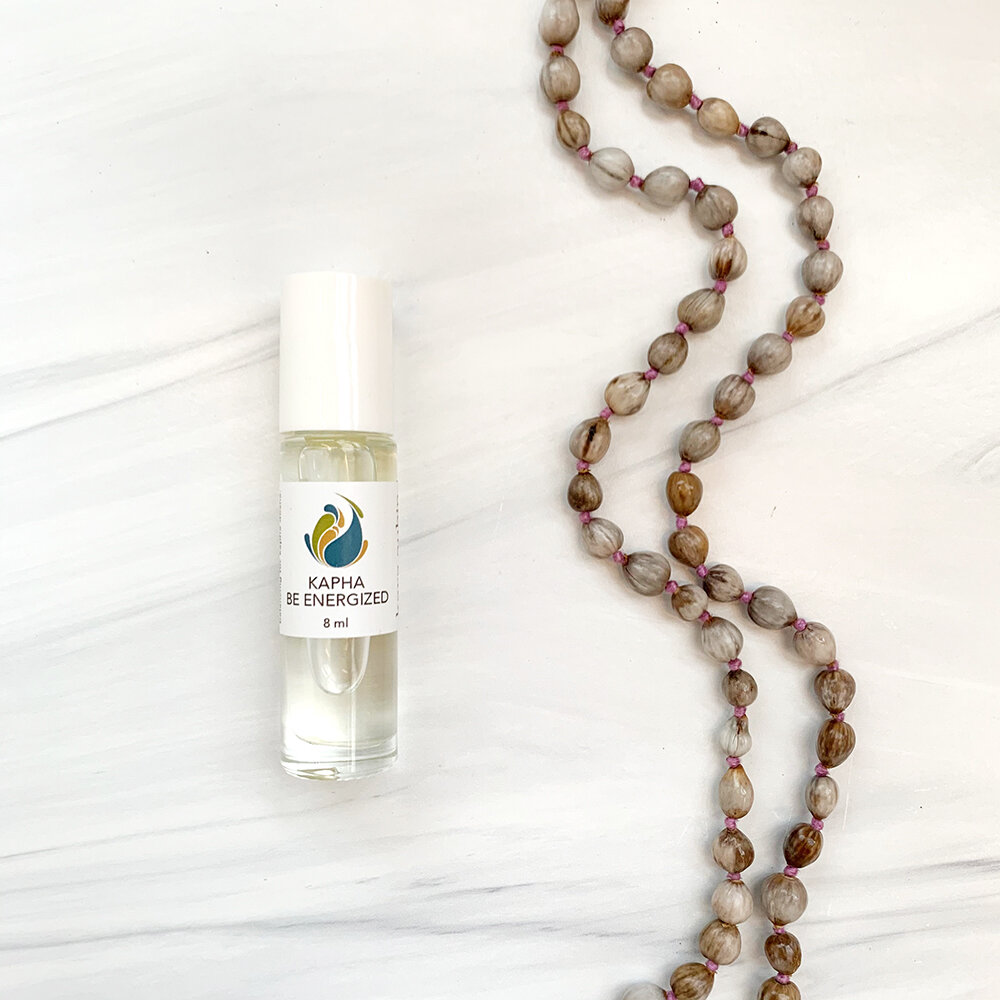creating balance for vata dosha
a seasonal transition
Whether we are ready for it or not, the transition from Pitta season (and the heat of summer) to Vata season (the cool, dry, crispness of fall) has begun. You may have noticed the drop in temperature in the mornings or the leaves on the trees are starting to dry out and make their way to the earth. The winds are blowing a little stronger and more erratic and perhaps you find yourself having difficulty sleeping.
In Sanskrit, we call this transitional space a sandhi. Sandhis are inherently difficult to manage and often create chaos for us, both internally and externally. Āyurveda teaches us that it is essential to manage this space and try to create an optimal internal environment for our organism so that it may find equilibrium and balance with the external environment.
Vata dosha shows up in many different ways… there is a Vata time of day (2 - 10 am/pm), a Vata stage of life (post the pause), and of course, a Vata time of year. For many, the external changes that occur during Vata season are the most obvious and clearly reflected. In this article we are going to look at the qualities of Vata dosha, how to create balance for Vata dosha, and of course, some practices to pacify Vata dosha.
the elemental and qualities of vata
Vata dosha is a combination of air + ether elements. The qualities (or gunas) of these elements are light, cold, dry, rough, subtle, mobile, and clear. Because these are the qualities of the elements, these are the qualities of Vata.
Understanding the elements and qualities of Vata can go a long way in preserving wellness; physically, mentally, and emotionally. Developing a healthy relationship with Vata can seem challenging, but in reality, as long as you have a basic, practical understanding of the concept, making informed decisions to cultivate balance is quite easy.
Vata, one of the three constitutional types, or doshas, recognized by Āyurveda, governs all movement. It is responsible for nerve impulses, muscular movements, respiratory movement, and movement within the GI tract. Communication is also ruled by Vata; this includes the movement of thoughts.
creating balance through opposites
Āyurveda uses ten pairs of opposite qualities (gunas), by which everything in the material world can be described. When we think of anything in our external environment we can ask ourselves, what qualities am I experiencing? Is it relatively hot, or relatively cold? Is it relatively dry, or relatively wet? Relatively heavy, or light? By evaluating the environment through the lens of these gunas, we get a clear picture of the doshic makeup of the outside world.
If we remember that “like increases like, and opposites balance”, we now have a way to usher in balance.
How do you know if Vata dosha is out of balance?
When Vata is high, we will see the gunas of Vata exacerbated. This may show up as:
light: feeling ungrounded, trouble falling asleep, trouble staying asleep
cold: cold hands and feet, poor circulation, low digestive fire
dry: dry skin, dry mucous membranes, dry hair, dry elimination
rough: rough skin, stiff muscles, and joints
subtle: issues of the mind: anxiety, insomnia, worry
mobile: excess mobility, in both the physical body and the mind (anxiety), irregular appetite
clear: forgetfulness (where did I put my keys?)
In order to restore balance, work with the opposite qualities, which are heavy, warm, oily, smooth, gross, stable, and dense. Incorporating these opposite qualities into daily life is what helps bring Vata back in balance, one step at a time.
There are many ways to stay healthy and constitutionally balanced this fall, let’s take a look at some practices and tools Āyurveda offers to pacify high Vata.
practices to balance vata dosha
Abhyanga
Oil is warm, heavy, unctuous, and smooth. The practice of abhyanga acts in opposition to each guna of Vata, making this a highly effective way to combat stress, anxiety, and overwhelm. It also helps to balance the doshas and promotes deep relaxation and a peaceful mind. Read more about this practice here.
Pranayama
Prana and Vata have functional integrity like content and container. Working with the breath is a powerful tool to balance Vata Dosha. Our on-demand library is full of supportive breath practices that assist in moving Vata downwards, and facilitate grounding and calming.
Warm, Grounding Herbal Tea
Vata Root Down Tea is formulated to counter the light, dry, and airy qualities of Vata dosha. When you need to feel grounded, present, and steady of mind brew a daily cup of Vata Root Down tea. This blend contains Ayurvedic Herbs that support the nervous system, and strengthen digestion and the adrenals.
Herbs + Spices
Warming, digestive spices are the first line of medicine for Vata. While almost all spices support Vata, we formulate two Vata-specific spice blends here at the AWC; 8 Spice Digestive and Vata Churna. Both are delicious and quite useful in pacifying vata dosa.
Not sure what to cook, or how to spice? Visit the recipes page on our blog.
Aromatherapy
Soothe an exhausted nervous system with Jatamamsi, strengthen and rejuvenate with Hina, or take in the benefits of the Vata Be Grounded or Stress Less rollers. Shop our products below to source support.
related products
related posts
loved what you learned? feeling inspired? share this article with someone who would benefit!
you can also share via the social icons below.






















